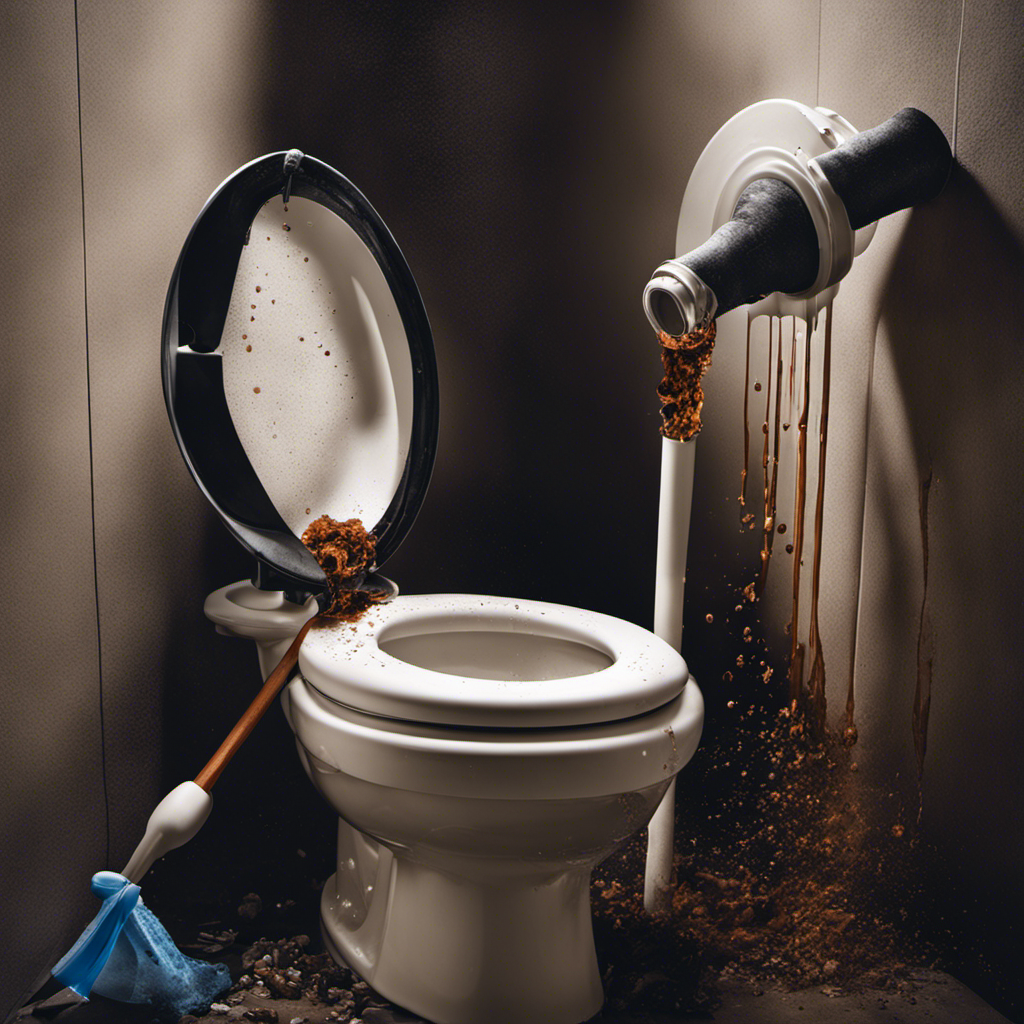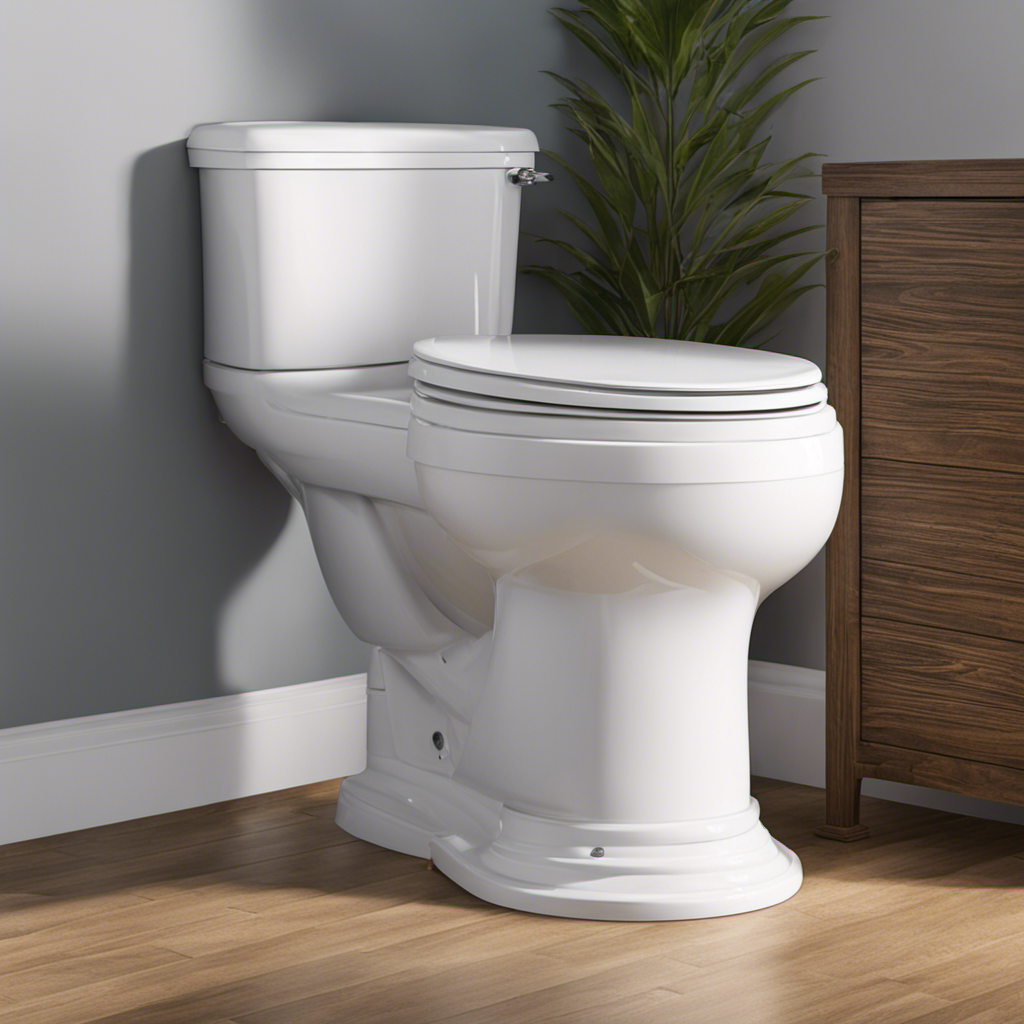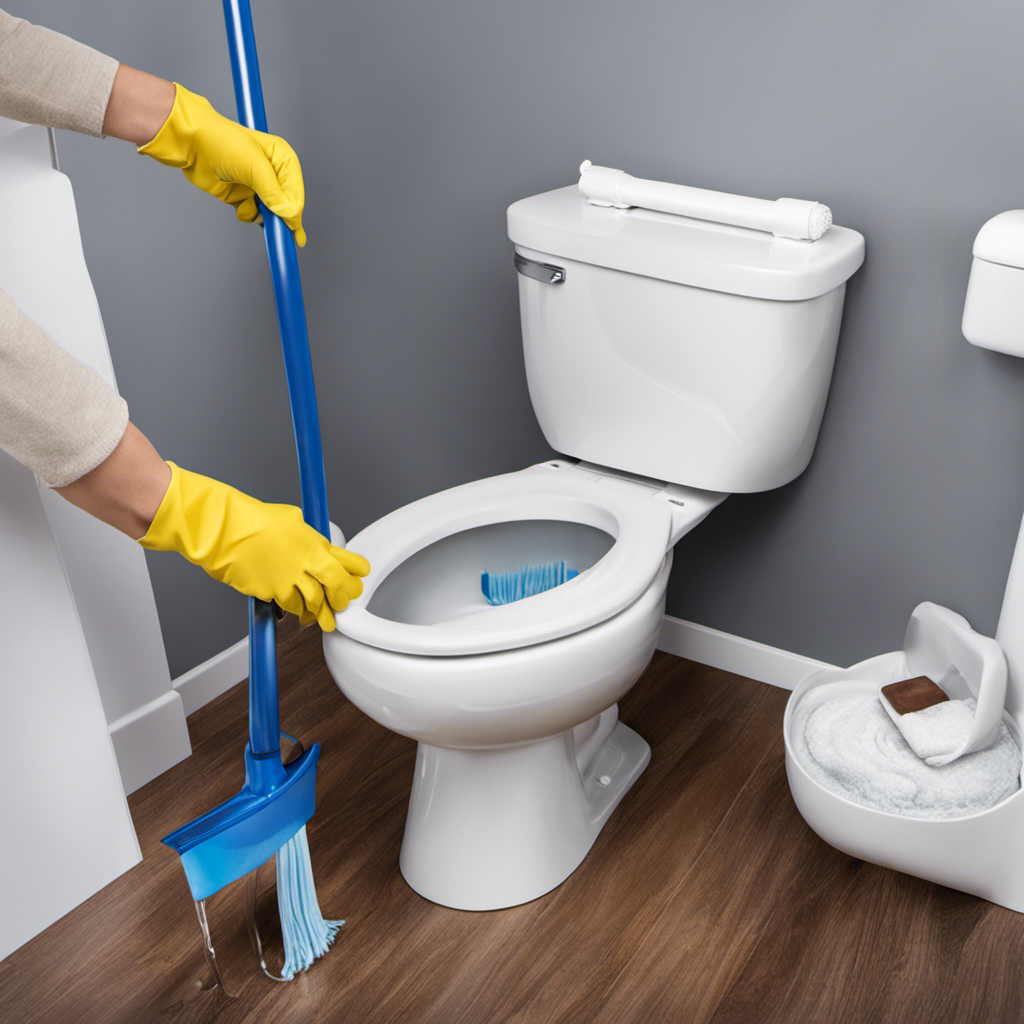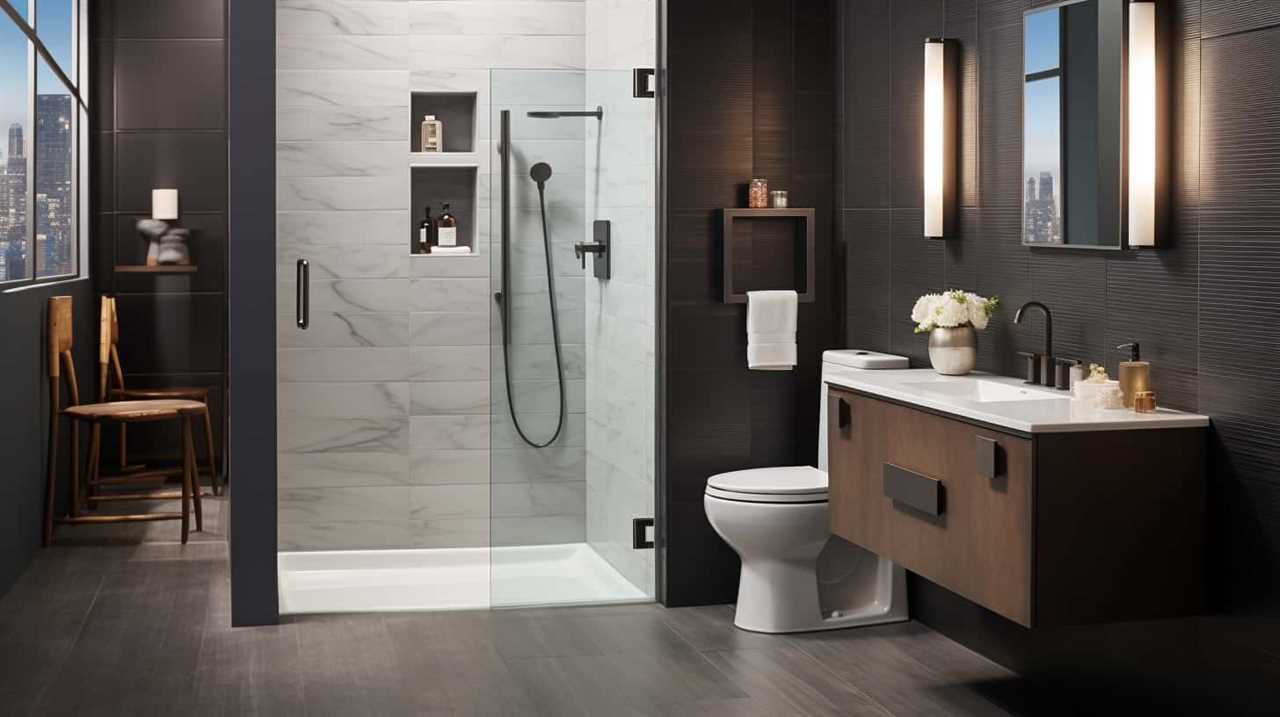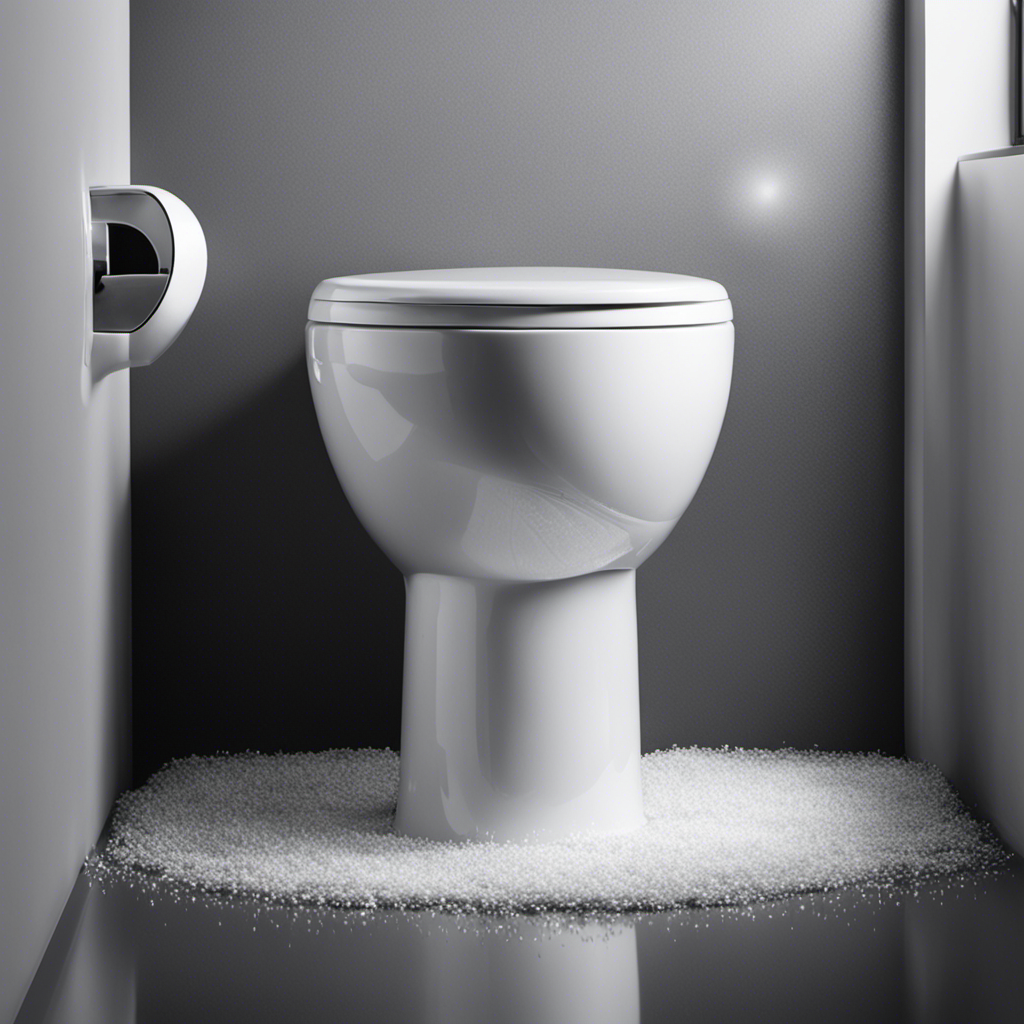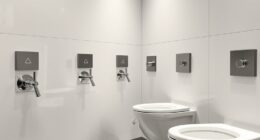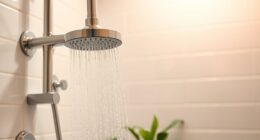I’m here to help you tackle one of life’s messiest problems: a clogged toilet.
Don’t let the fear of a backed-up bathroom stall you any longer. With a few simple steps and the right tools, you’ll be able to unclog your toilet like a pro.
In this article, I’ll guide you through the process, point out common mistakes to avoid, and give you tips for preventing future clogs.
So, let’s roll up our sleeves and get this toilet unclogged!
Key Takeaways
- The most common reasons toilets get clogged include flushing non-flushable items, excessive toilet paper usage, flushing feminine hygiene products, and disposing of diapers or wet wipes down the toilet.
- Essential tools for unclogging a toilet include a plunger with a flange, rubber gloves, a toilet auger, a drain snake, and a toilet brush.
- The step-by-step guide to unclog a toilet includes positioning the plunger over the drain hole, pushing and pulling the plunger vigorously, using a toilet auger if necessary, and trying a mixture of hot water and dish soap before calling a plumber.
- Common mistakes to avoid when unclogging a toilet include using excessive force, flushing repeatedly, neglecting toilet clog prevention, wearing gloves to avoid mess, and not being proactive in toilet clog prevention.
Reasons Why Toilets Get Clogged
One of the main reasons toilets get clogged is because people flush non-flushable items. Some common causes include excessive toilet paper usage, flushing feminine hygiene products, and disposing of items like diapers or wet wipes down the toilet. These items can easily get stuck in the pipes, leading to a blockage.
It’s important to understand the causes of toilet clogs in order to prevent them. Signs of a clogged toilet include water backing up in the bowl, slow drainage, or a complete inability to flush. If you notice any of these signs, it’s essential to address the issue promptly to avoid further damage.
In the next section, I will explain how to properly unclog a toilet.
Essential Tools for Unclogging a Toilet
To effectively clear a clogged toilet, you’ll need a plunger and a pair of rubber gloves. Here are the essential tools for unclogging a toilet:
-
Plunger: This is the most important tool for unclogging a toilet. Make sure you have a plunger with a flange, as it creates a better seal around the drain.
-
Rubber Gloves: It’s important to protect your hands while dealing with a clogged toilet. Rubber gloves will keep your hands clean and safe from any harmful bacteria.
-
Toilet Auger: If the plunger doesn’t work, a toilet auger can be used to remove stubborn clogs. It has a long, flexible cable that can reach deep into the drain to break up the clog.
-
Drain Snake: For more severe clogs, a drain snake can be used. It has a coiled wire that can be inserted into the drain to break up and remove the clog.
-
Toilet Brush: After successfully unclogging the toilet, use a toilet brush to clean the bowl and ensure everything is in proper working order.
Step-By-Step Guide to Unclog a Toilet
Follow these simple steps and you’ll have your toilet working again in no time.
When it comes to toilet unclogging techniques, there are a few DIY toilet repairs you can try before calling a plumber.
First, grab a plunger and position it over the drain hole, making sure it creates a tight seal. Then, push and pull the plunger vigorously, creating suction to dislodge the clog.
If that doesn’t work, try using a toilet auger. Insert the auger into the drain hole and rotate the handle clockwise to break up the clog.
Finally, if all else fails, you can try using a mixture of hot water and dish soap. Pour the mixture into the toilet bowl and let it sit for a few minutes before flushing.
Common Mistakes to Avoid When Unclogging a Toilet
Make sure you don’t forget to wear gloves when attempting to unclog a toilet to avoid any potential mess.
When it comes to unclogging a toilet, there are some common mistakes that you should avoid. Here are a few things to keep in mind:
- Using excessive force: Pushing too hard or using a plunger aggressively can cause the clog to become even more stubborn.
- Flushing repeatedly: Continuously flushing the toilet in hopes of clearing the clog can lead to an overflow and further damage.
- Neglecting toilet clog prevention: Regularly maintaining your toilet can help prevent clogs. Avoid flushing non-flushable items and use a toilet auger or plumber’s snake when necessary.
By avoiding these mistakes and being proactive in toilet clog prevention, you can save yourself from the frustration and inconvenience of a clogged toilet.
Remember to address the signs of a clogged toilet early on, such as slow draining or water backup, to prevent more serious issues.
Tips for Preventing Future Toilet Clogs
Remember, regularly maintaining your toilet and being mindful of what you flush can help prevent future clogs. To keep your toilet in good working condition, here are some tips for toilet maintenance.
Firstly, check for any leaks or cracks in the toilet bowl or tank. If you notice any, repair or replace them immediately to prevent water damage.
Secondly, clean the toilet regularly using a toilet brush and cleaner to remove any build-up or stains. This will help prevent blockages caused by debris or mineral deposits.
Additionally, avoid flushing items like baby wipes, paper towels, or feminine hygiene products, as these can easily cause clogs.
Finally, if you do encounter a clog, try using a plunger or a plumbing snake to clear it before resorting to harsh chemicals.
Conclusion
Well, that’s the whole shebang on how to properly unclog a toilet. Now you’re armed with the knowledge and tools to tackle those pesky clogs like a pro.
Remember, it’s all about finesse and patience. So the next time you find yourself in a sticky situation, don’t fret. Just follow these simple steps and you’ll have your toilet flowing smoothly in no time.
Happy unclogging!
